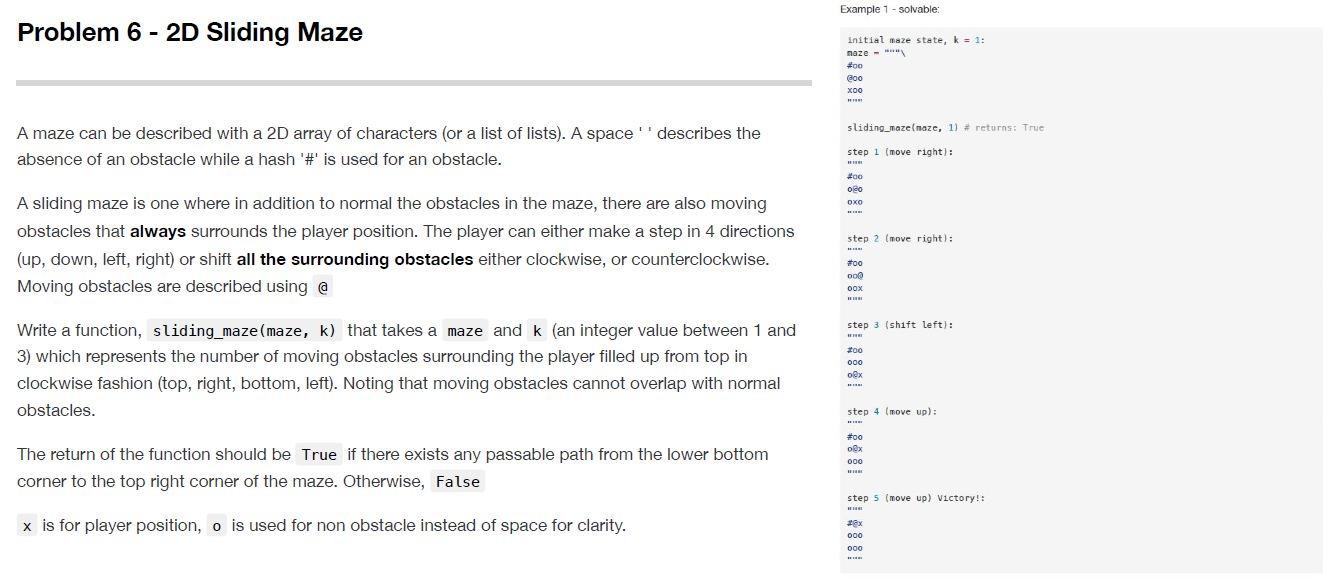 in Python
in Python
Example 1 - Solvable: Problem 6 - 2D Sliding Maze Initial maze state, k = 1: maze - #00 @00 A maze can be described with a 2D array of characters (or a list of lists). A space"describes the absence of an obstacle while a hash '#' is used for an obstacle. sliding_maze naze, 1) # returns: True step 1 (move right): H #og oco step 2 (move right): A sliding maze is one where in addition to normal the obstacles in the maze, there are also moving obstacles that always surrounds the player position. The player can either make a step in 4 directions (up, down, left, right) or shift all the surrounding obstacles either clockwise, or counterclockwise. Moving obstacles are described using a Foo 000 step 3 (shift left): HE Write a function, sliding_maze (maze, k) that takes a maze and k (an integer value between 1 and 3) which represents the number of moving obstacles surrounding the player filled up from top in clockwise fashion (top, right, bottom, left). Noting that moving obstacles cannot overlap with normal obstacles. 700 000 o@x step 4 (move up): #00 o@x 000 The return of the function should be True if there exists any passable path from the lower bottom corner to the top right corner of the maze. Otherwise, False step 5 (move up) Victory!: H x is for player position, o is used for non obstacle instead of space for clarity. #ex 000 000 Example 1 - Solvable: Problem 6 - 2D Sliding Maze Initial maze state, k = 1: maze - #00 @00 A maze can be described with a 2D array of characters (or a list of lists). A space"describes the absence of an obstacle while a hash '#' is used for an obstacle. sliding_maze naze, 1) # returns: True step 1 (move right): H #og oco step 2 (move right): A sliding maze is one where in addition to normal the obstacles in the maze, there are also moving obstacles that always surrounds the player position. The player can either make a step in 4 directions (up, down, left, right) or shift all the surrounding obstacles either clockwise, or counterclockwise. Moving obstacles are described using a Foo 000 step 3 (shift left): HE Write a function, sliding_maze (maze, k) that takes a maze and k (an integer value between 1 and 3) which represents the number of moving obstacles surrounding the player filled up from top in clockwise fashion (top, right, bottom, left). Noting that moving obstacles cannot overlap with normal obstacles. 700 000 o@x step 4 (move up): #00 o@x 000 The return of the function should be True if there exists any passable path from the lower bottom corner to the top right corner of the maze. Otherwise, False step 5 (move up) Victory!: H x is for player position, o is used for non obstacle instead of space for clarity. #ex 000 000
 in Python
in Python





